KUALA LUMPUR, June 2 — It's the crack of dawn, barely 6am when fisherman Lim Kee Hwa, 56, steps out of his home in the dark while most of his family are still asleep.
It didn’t matter if it was a weekday or weekend, if there was fish to be caught he would go.
Lim, known as Ah Hwa, rides his motorcycle into the quiet town of Pasir Penambang, speeding past its Chinese kampung-style shoreside village houses to the nearest 'kopitiam' where his crew is waiting where it's time for breakfast, joined by two third-generation fishermen, Zhang Guen Chi, 74, and Teo Kun Chui, 56.
Zhang has been fishing for over 60 years since he was five years old, and his son Teo and his grandson followed in his footsteps.

The men gather around the table and have a simple breakfast of kaya toast and ‘kopi ping’ while checking their phones for the day’s weather.
With a GPS app on their smartphones, they are able to predict how long they are to stay at sea before rough weather comes in.
“In the past, we could tell by experience how the wind of the sea will blow by the seasons,” Zhang tells Malay Mail.
“But today the weather has become unpredictable and we rely on our GPS app to find out where the winds will blow the fish to.”
After finishing their meal, Ah Hwa heads to the hawker stalls nearby to pack a light meal for the crew and at around 8am, they meet at the nearby jetty to depart to the sea.
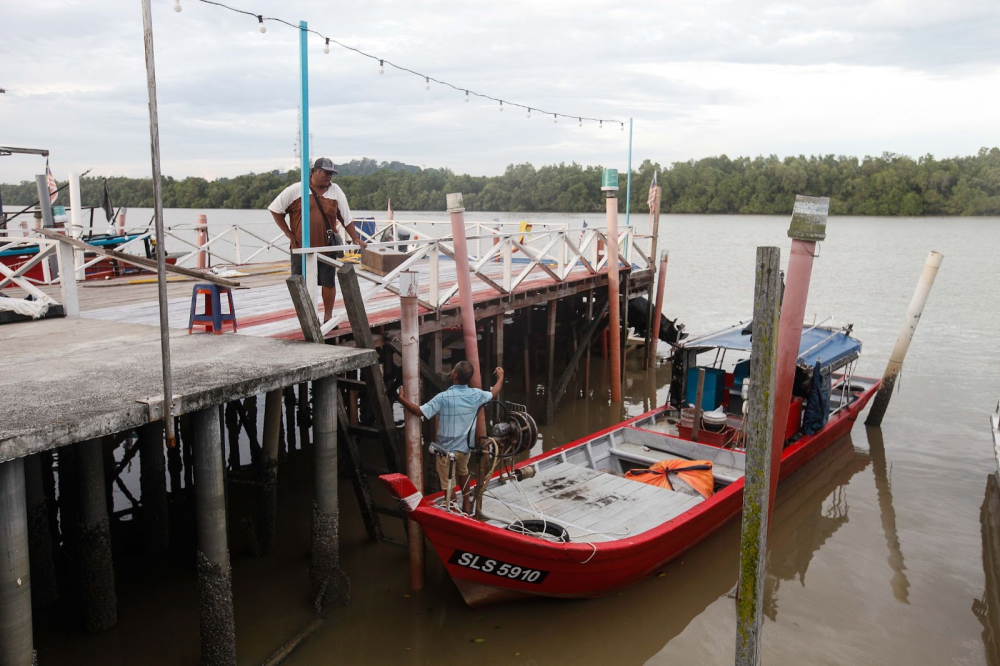
The men toss and hand down buckets, hand-sewn nets, and cigarettes into a white and red-painted fishing boat.
Despite the slippery deck from rain the night before, the men step into the boat casually chatting and whistling, entering a second home.
As the sun rises at about 8.45am, the scratched-up hull begins to shake as the engine revs before it begins heading to the sea.
Ah Hwa says that usually the heavy wind and currents will begin to come in with the thick grey clouds at around 11am to 12 o'clock.
The crew will need to make the bulk of their catch between 9am to 12pm before the heavy current and wind come in.
The boat begins to pick up speed, passing through the surrounding mangrove forest and the distant Altingsburg Lighthouse.
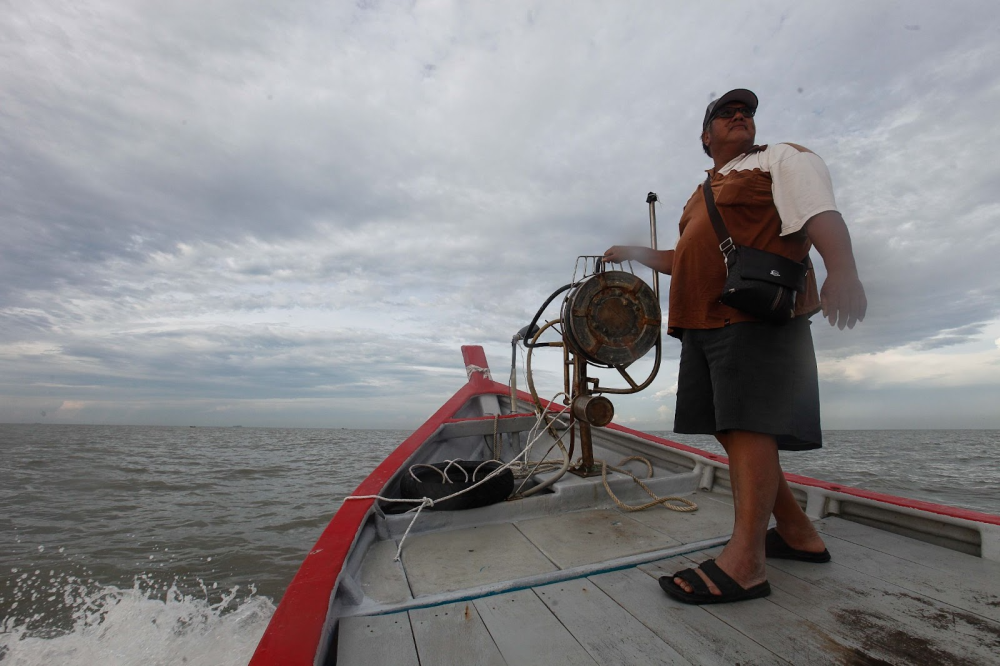
“We’ve been out at sea so often that we can tell where we are by knowing where the lighthouse is and using our ‘human GPS’,” Teo says.
They meet other boats of Malay and Chinese fishermen and greet them, asking whether their catch was good.
Ah Hwa said that May to June is considered off-season which means smaller catches of fish, prawns, crabs, and squid.
“We (Sekinchan fishermen) mark our territory with various flags in the sea, it also makes it easier for us to locate our nets when they are pushed by the current,” Teo said.
At 10am the crew go to their nets to check their catch for the day, reeling in a small sum of prawns and small fish, but nothing too impressive for the day.
Teo said the amount of fish they can catch depends on the sea level, the strength of the current, and the quality of the seawater.
At 11.30am the fishermen cast their handsewn nets into the sea, which spans a length of 1.5 to 2 kilometres.
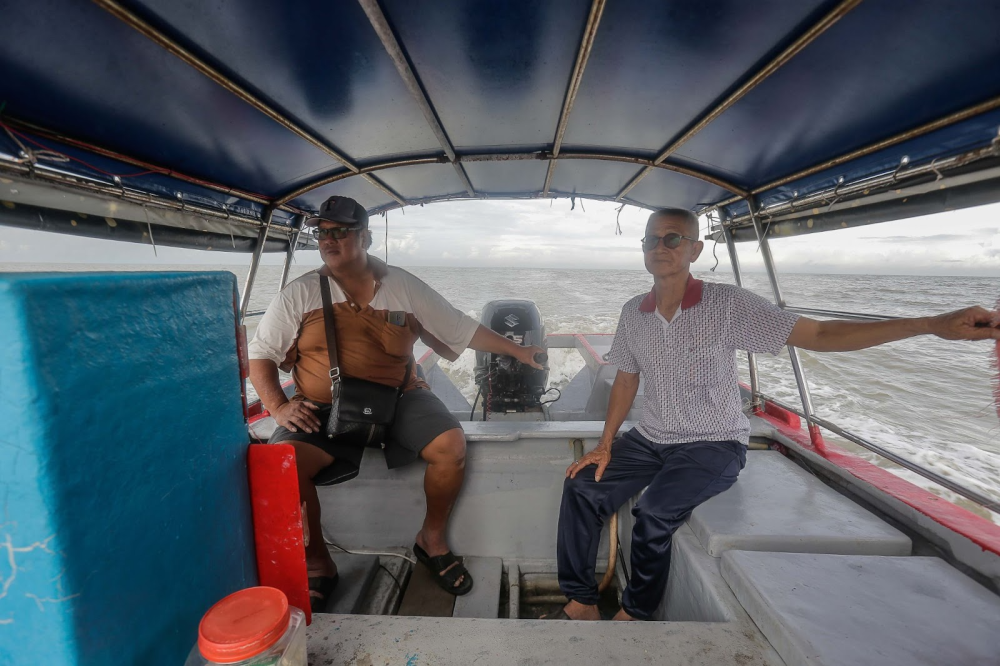
“At peak season, we will spend nine to 10 hours at sea, although it's not uncommon for some fishermen to go beyond that,” Ah Hwa said as the ship turned around.
“But today we won’t be doing that as I don’t want to give you guys (the Malay Mail team) a heart attack.”
He said that sometimes the fishermen will brave the seas past the afternoon and face the rain and thunder if they know there is a good catch to be had.
He added that he and his crew also go out from 6pm to 11pm occasionally to fish at night if they suspect the weather will bring a good catch.
As the fishing boat passes other fishermen, Teo pointed out that most of the fishermen stood at the back of their boats because they didn’t catch much fish.
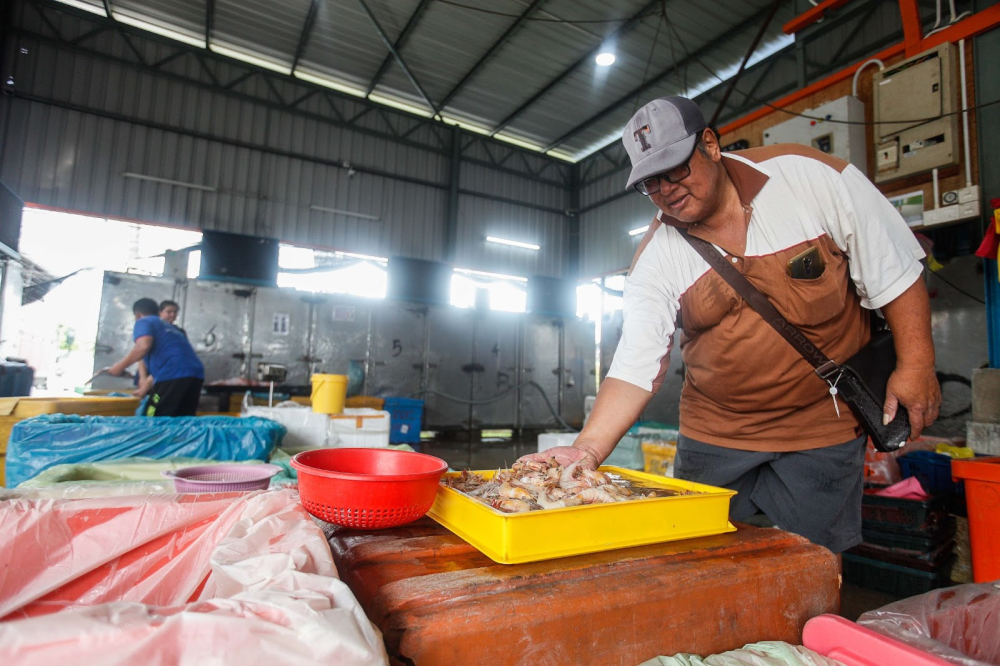
As the heat of the day reaches its peak at 12.30pm the crew arrives back at the port and counts their catch before heading to the market.
Ah Hwa shared that he sells his portion of the catch to any potential customers or sellers, while Zhang and Teo sell their catch to one ‘boss’ in one market.
They ride their bikes to the public market at 1.30pm, Ah Hwa shared that the fishermen could earn RM75 to RM100 per kilogram by selling desired fish species like Chinese Pomfret for tilapia.
The fishermen arrive at a seafood wholesaler, Hock Kee, behind the market, where Ah Hwa sells some of his catch of prawns, fish, and clams.
“During peak season we can earn up to RM10,000 to RM12,000 RM a month but in a normal season we earn RM6,000 to RM8,000 per month,” Ah Hwa said.
“On bad days like this week, we earn nothing because we can’t even go out due to the bad weather.”
At 2.30pm the fishermen gather at their parked motorcycles at a nearby seafood restaurant and share with Malay Mail their experiences.
Ah Hwa, the entrepreneur of the crew, admits that fishing isn’t his only stream of income as he sells durian and vegetables on the side.
Zhang and Teo share that fishing is a tough and dangerous job and is becoming even more challenging as they claim they are ‘less fish in the sea’.
Despite being third-generation fishermen the father and son said that they would not want their children or grandchildren to continue their tradition.
“Our work is tough and dangerous, I wouldn’t wish that on my grandchildren,” Zhang said.
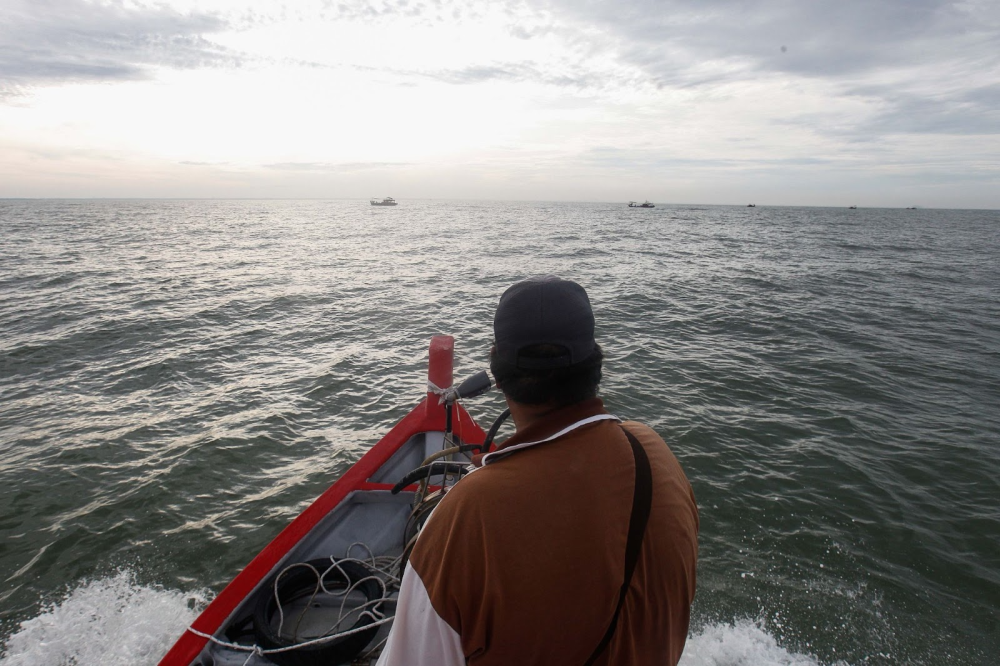
“Sometimes we can finish our work as late as 12am to 1am in the night and there have been some fishermen who haven’t come home.”
Asked if Zhang wanted to move to the city or travel elsewhere however, he simply replies that he hadn’t thought of it.
“I couldn’t live any other way,” the 74-year-old says.






















